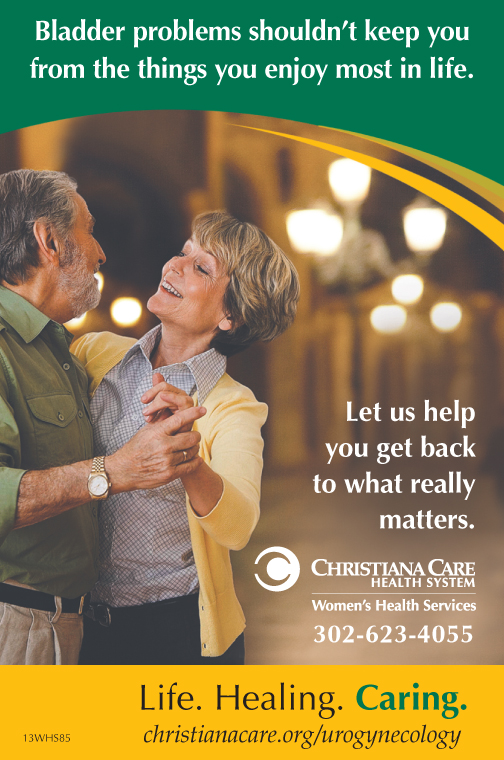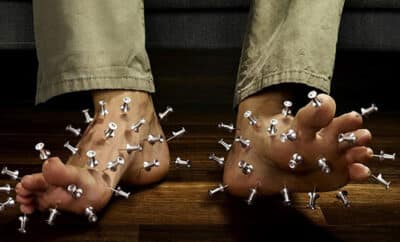Three Of The Latest Methods In Treating Overactive Bladder
By now we all have heard of Botox®, the injectable substance that relaxes facial lines.
But did you know Botox® is a fairly recent method in treating overactive bladder? It’s one of three very effective options we can offer patients who aren’t completely satisfied with the results they have seen from medications and behavior modification techniques.
About four of every ten women in the U.S. have overactive bladder or OAB, making more than eight trips to the bathroom during the day and often getting up at night. That sudden, urgent need to go also can result in leaking urine.
At best, it’s an inconvenience. At worst, it has a major impact on a woman’s lifestyle, keeping her from activities she enjoys, such as working out and participating in outings far from the nearest ladies room.
The Food and Drug Administration (FDA) approved Botox® to treat urinary incontinence in 2011. A few years later, Medicare started covering it and major insurers followed suit.
Injections work with the bladder the same way it works in cosmetic treatments. It keeps the bladder from contracting involuntarily, just as it prevents facial muscles from contracting and causing wrinkles.
Cosmetic Botox® works on facial lines for three to six months. It lasts much longer on the bladder, about 12-18 months.
There are two options for this type of therapy. Patients can receive injections in an office setting under local anesthetic. Or they may be more comfortable in an outpatient center under sedation.
Typically, patients receive 20 small injections, which can feel like small bites. There’s no down time after the procedure. You can immediately resume your normal activities.
Practically Painless, Zero Side Effects
You also might not have heard of tibial nerve stimulation, a practically painless non-surgical treatment that has zero side effects.
It’s a simple procedure. An acupuncture needle is inserted into the skin behind the ankle to stimulate the anterior tibial nerve. The needle is very thin and some patients barely feel it.
We send electrical impulses to the part of the spinal cord that controls voiding, using the tibial nerve like a big extension cord.
The therapy has a good success rate, with about 75 percent of patients improving. One of the first areas of improvement that we tend to see is that women don’t have to go to the bathroom as often at night.
Typically, patients get weekly treatments for 30 minutes for up to 12 weeks. Sometimes patients can receive a treatment twice a week in order to shorten the duration of therapy.
Typically, if it doesn’t work after four weeks, it probably isn’t going to work, and we will explore another option.
The treatment lasts about a year. Retreatment is much faster than the initial therapy, typically about four treatments, because the body remembers what it has learned.
Approved for Urinary and Bowel Incontinence
Sacral neuromodulation is another highly successful, simple therapy used to treat urge incontinence and overactive bladder by helping the nerves in the bladder to function properly. It is also approved to treat bowel incontinence.
To control the nerves of the bladder, a small device called InterStim® is inserted through the skin near the tailbone, or sacrum. It sends electrical impulses to the nerves of the bladder, decreasing the urge to urinate. Patients do not typically feel the stimulation at all.
Patients take the device for a test drive, keeping a diary to log their trips to the bathroom. If symptoms greatly improve or go away altogether, the device is implanted near the hip.
It comes with a hand-held programmer the patient can use to turn the device on and off, as well as increase or decrease the impulses.
The implant is permanent. The battery that powers it has a life span of five to seven years. Battery replacement is simple. It takes about 10 minutes—and patients go back to their active lives.
To make an appointment please call the Christiana Care Center for Urogynecology and Pelvic Surgery.
Please mention you read about this treatment in The Women’s Journal.
Christiana Hospital Medical Arts Pavilion 2 302-623-4055
4735 Ogletown-Stanton Road, Suite 1208, Newark, DE 19713
Christiana Care Center of Women’s Health 302-623-4055
3706 Kennett Pike, Greenville, DE 19807
Christiana Care Concord Health Center 610-361-1030
161 Wilmington-West Chester Pike, Chadds Ford, PA 19317
www.christianacare.org/urogynecology
call 302-623-4055 or visit www.christianacare.org/urogynecology
You will meet highly skilled and caring physicians who are the only urogynecologists in Delaware who have completed fellowships and are board-certified in female pelvic medicine and reconstructive surgery:
 Babak Vakili, M.D., is the director of the Christiana Care Center for Urogynecology and Pelvic Surgery. Dr. Vakili completed his fellowship in female pelvic medicine and reconstructive surgery at the Louisiana State University Health Science Center.
Babak Vakili, M.D., is the director of the Christiana Care Center for Urogynecology and Pelvic Surgery. Dr. Vakili completed his fellowship in female pelvic medicine and reconstructive surgery at the Louisiana State University Health Science Center.

Emily K. Saks, M.D., MSCE, is a urogynecologist with the Christiana Care Center for Urogynecology and Pelvic Surgery. Dr. Saks completed her fellowship in female pelvic medicine and reconstructive surgery at the Hospital of the University of Pennsylvania.

Howard B. Goldstein, D.O., MPH, is a urogynecologist with the Christiana Care Center for Urogynecology and Pelvic Surgery. Dr. Goldstein completed his fellowship in female pelvic medicine and reconstructive surgery at Cooper University Hospital in Camden, New Jersey.
Matthew Fagan, M.D., MS, is a urogynecologist with the Christiana Care Center for Urogynecology and Pelvic Surgery. Dr. Fagan completed his fellowship in female pelvic medicine and reconstructive surgery at Greater Baltimore Medical Center/University of Maryland.






